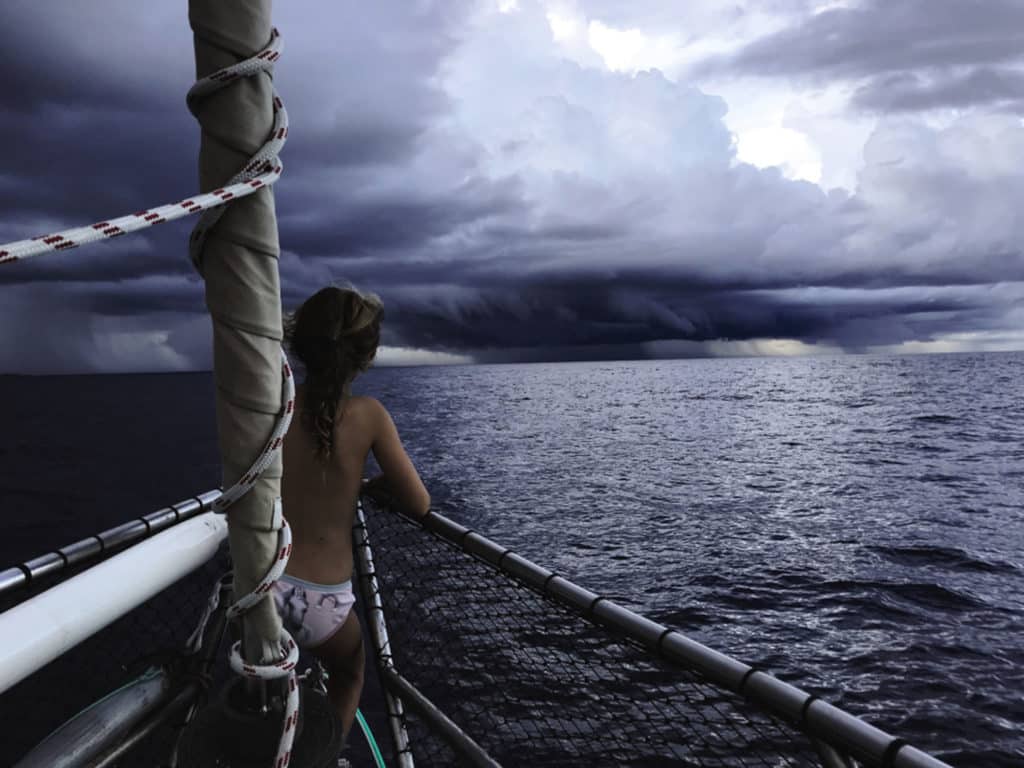
The novel coronavirus sent the entire planet, including the sailing world, into a complete tailspin, and at least temporarily altered or even erased the very freedom we enjoy while cruising under sail. The following five COVID-19 dispatches from both near and far-flung waters are a testimony to the resiliency and fortitude of sailors everywhere, serving as snapshots of our time.
This past spring, the global pandemic resulting from the novel coronavirus upended the world—including the cruising world—as sailors around the planet scrambled to seek safe harbors and dash together new plans even as borders and waterways slammed closed and the notion of “quarantine,” always a feature of the conclusion of a long passage, took on a whole new meaning.
There was nowhere, literally, that was not affected in some way, shape or form. Working from home here in Newport, Rhode Island, the stories began trickling in. Some of those filtering back were troubling; others were inspirational, bordering on outright heroic.
Take the case of Argentine sailor Juan Manuel Ballestero who, as reported in The New York Times, was stranded on a small island off the coast of Portugal in mid-March aboard his Ohlson 29, Skua, when the pandemic struck. Desperate to see his father, who was soon to turn 90, Ballestero decided to sail home. He was denied entry to Cape Verde to reprovision and pressed on anyway, ultimately spending 85 days at sea before reuniting with his dad in Mar del Plata, where he did receive a hero’s welcome.
Or what about the great yacht designer Rod Johnstone, one of the principals of the family-run J/Boat company. According to an account in The Royal Gazette, a Bermuda newspaper, Johnstone’s friend Jean de Fontenay was visiting the United States, with his 67-foot boat, Baraka, docked on the island nation in St. George’s, when everything closed down, including all international flights. Hurricane season was approaching. What to do? Well, Johnstone, de Fontenay and two crew hopped aboard a new 33-foot J/99 and sailed from Connecticut to Bermuda. They were never allowed ashore, but a Bermudan friend left groceries in their dinghy, and the four sailors split up and doublehanded the two boats back to the States. They were not to be denied.
What follows are five more dispatches from around the globe, of sailors facing and reacting to unprecedented circumstances in this dreadful season of COVID-19. They speak for themselves. And they make us proud to be members of the community of cruising sailors.
Problems in the Pacific
By Alvah Simon
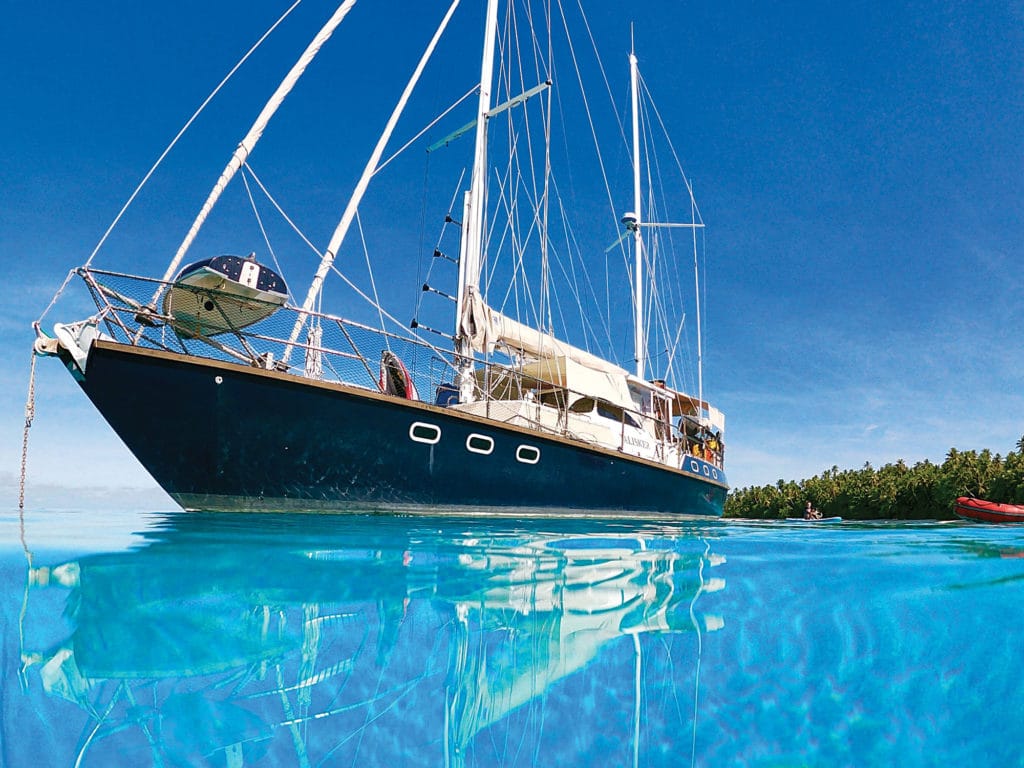
The best-laid plans of the cruising sailor oft times go astray. But no matter Mother Ocean’s wind or waves, tides or tantrums, bluewater sailors always knew that somewhere on that distant shore, a port of refuge awaited them. Then along came COVID-19.
Perhaps most illustrative of these dystopian times is the saga of New Zealanders Daryll and Maree Walker and their two children on board their 57-foot yacht, Talasker. They had set off on the trip of a lifetime: a clockwise voyage around the Pacific Rim, up through the islands to Japan, over to Alaska, down the West Coast and back to New Zealand via the fabled South Pacific.
Things were rolling along splendidly but, while in Micronesia, rumors of a global pandemic began to filter in. They headed straight for Guam, arriving a mere three hours before the borders closed. They hoped to push on to Japan but began to suspect that the Japanese government was underreporting COVID-19 cases because of the effect on the coming Olympics. In any event, they could not be sure that the Japanese border would not close while en route.
They made the hard decision to turn around; as it turned out, it was much harder than they could have imagined.
For added safety, they chose to voluntarily isolate on board for two weeks before departing Guam, thus depleting their supplies. They sailed to Ponape, where they were flatly refused entry. Using dwindling fuel supplies, they soldiered on to the remote Kapingamarangi Atoll. The locals were friendly but firm: no entry. Understandable when put in historical context; the Marquesas Islands had a thriving population of over 100,000 when they first allowed foreign sailors to enter with inadvertent but devastating diseases. Their numbers bottomed out at 4,000 souls.
Talasker headed south to the Solomon Islands, emailing ahead for permission to rest, refuel and resupply. Not only was this denied, but they were even refused permission to transit Solomon Islands’ waters toward another port of refuge. Then they were commanded to stop and were visited over several days by police and immigration vessels who threatened fines, jail and impoundment for ill-defined violations. After several days of fear and confusion, they were told they could proceed through Bougainville Channel. But at nearly 100 miles out, they were ordered back to Honiara. They wisely ignored these orders and pushed on toward New Caledonia.
There they were told they would be granted only 24 hours in an isolated anchorage and then must depart. They were tired, low on everything, and dangerous weather was predicted near New Zealand. “Bureaucrat” is actually a French word that roughly translates into English as “cover your butt.” Those were the “official” restrictions, but they were granted two days of glorious rest before they were even approached by officials, then given access to fuel and limited supplies, and allowed to await a safer weather window. Viva le France! Ultimately, they stayed 10 whole days before a weeklong sail to New Zealand. There, after nearly two months at sea, they gratefully dropped their lines on the immigration dock.
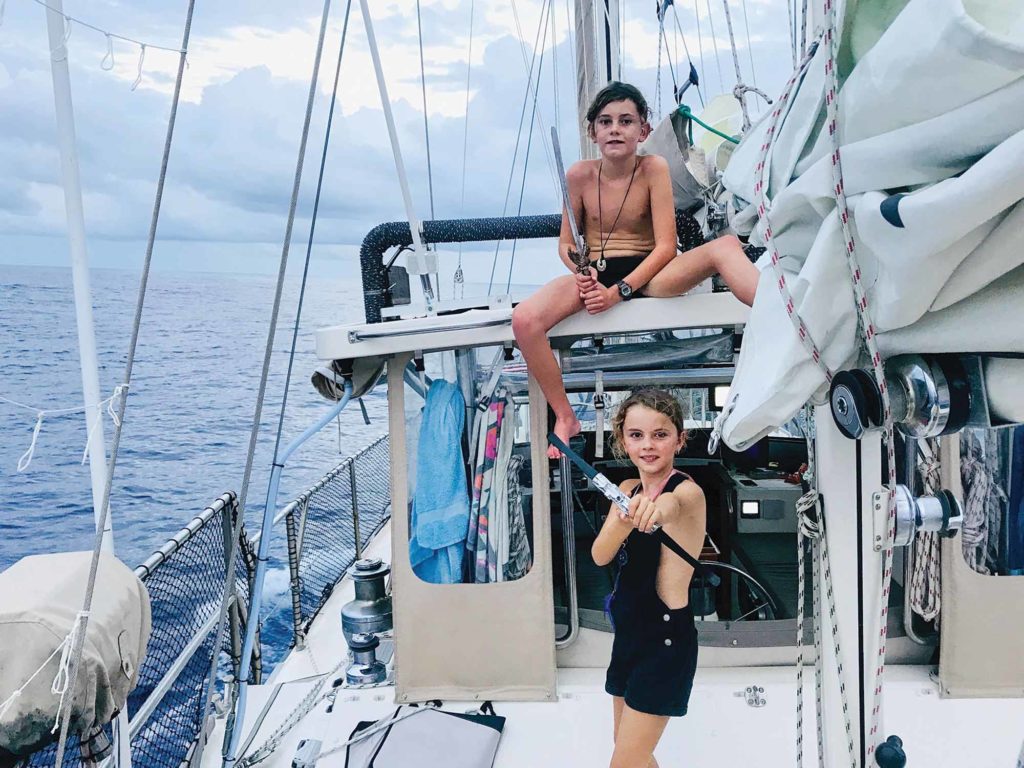
But what of the future? While Daryll said that they are raring to head out again, many cruisers are nearly crippled with uncertainty. There are presently 40 foreign vessels “trapped” in Whangarei alone because all Pacific islands and Australia have closed their borders. Many sailors who landed in New Zealand flew home to the States or Europe and now cannot return to their vessels. The New Zealand government has extended all visas and customs exemptions for foreign sailors but, frankly, many skippers feel they are in the safest place in the world and are in no hurry to depart. In fact, normally each year the town of Whangarei hosts an appreciation party for the 100 visiting yachts that contribute an estimated $20 million to the local economy. This year, however, it is the cruisers hosting the party to express their appreciation for their treatment by the town and the Kiwi government.
For local sailors, such as myself, the lockdown was fast and furious. The restrictions were so strict as to prevent me from even rowing out to my yacht to check the mooring and bilges for an agonizing six weeks. Those who were genuine liveaboards—along with those who, against government directives, fled their land homes to self-isolate on board—were given an almost hostile reception by locals in more-remote anchorages such as Great Barrier Island. The locals felt that the yachties were depleting the island’s limited supplies and unnecessarily exposing them to possible infection, and perhaps resented the appearance that while people on land were being desperately inconvenienced, the sailors seemed to be enjoying a holiday of swimming, fishing and moving from anchorage to anchorage. Finally, the police were asked to intervene.
The New Zealand Marine Association last year sent out emissaries to Fiji and Tahiti, and as far afield as Mexico and Panama, to entice cruisers toward New Zealand for the Southern Hemisphere cyclone season. Presently, 300 westbound yachts are waiting in Tahiti for the gates to open. The Whangarei Town Basin Marina receives daily inquiries from the Americas saying: “The Galapagos is closed. Can we come if it is nonstop?” Any response would be obsolete before the ink was dry because the situation is too fluid.
Soon, as a French Territory, Tahiti will open. But New Caledonia, while sharing the same status, will still require a 14-day isolation in a hotel at the owner’s expense and then a further seven days on board without credit for time at sea.
The point is, there can be no real clarity while nations differ in pandemic strategies, bend to political and economic pressures, brace for the dreaded second wave, and await results of vaccine research, production and, undoubtedly, uneven distribution.
But take heart: By nature we cruisers are an adaptable lot. This COVID-19 crisis will test our patience, but in time we will once again escape to the boundless blue.
Two-time circumnavigator and author Alvah Simon is a contributing editor to Cruising World.
Offshore in the Blue Atlantic
By Hank Schmitt
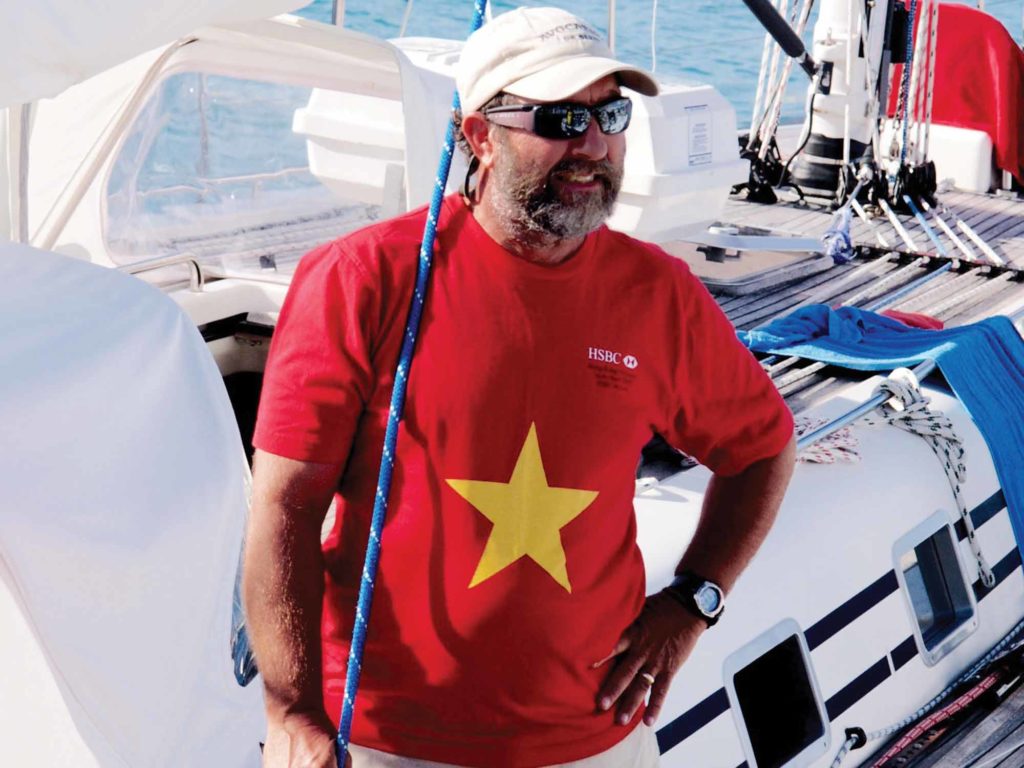
I have been fortunate to spend the past 15 winter sailing seasons in the Caribbean. My regular port of refuge is St. Maarten, with numerous flights and a high level of quality marine services. Most fellow veteran sailors thought the challenges inflicted by the one-two punch of hurricanes Maria and Irma were insufferable enough. But it turns out nobody had a pandemic plan in place from the smallest Caribbean island to world leaders. The quick shutting down of borders caught many skippers by surprise, locking many in place. Those caught at sea, as islands closed entirely, were in double trouble.
Obligations to departing charter guests in Dominica, along with confusion over the ever-changing closing dates of borders, caught me solo-sailing 180 nautical miles in 24 hours from Dominica to St. Maarten…arriving 11 hours after the island had closed. A 48-hour reprieve under Q flag only deepened the resolve of customs and border patrol to enforce the closure, which led me to Plan B: a sail to the United States Virgin Islands. I could not get into St. Maarten, but with my Swan 48, Avocation, being an America-flagged vessel, and me being an American citizen, I would be guaranteed entry.
In my mind, onboard email capability is not a necessity. So, before leaving St. Maarten, I therefore had to relay by text to friends ashore my answers to the COVID-19-related questions that US Customs was posing that were required 24 hours before arrival. After another solo overnight sail from St. Maarten to Charlotte Amalie, I dropped anchor off the Customs office located at the Blyden Ferry Terminal to clear in. No one in the office had received my pre-arrival health declaration, but no matter. Ten minutes later, I was legally welcomed back to US territory with no quarantine, no restrictions, no fee—not even a temperature check.
This is not to say that everything was normal. At the airport, the National Guard was performing temperature checks for passengers arriving by plane. The cruise-ship terminals were empty, hotels closed, charters canceled and the nearby British Virgin Islands under a no-sail edict. Seeing zero sails traversing Sir Francis Drake Channel at the height of the Caribbean sailing season was somewhat apocalyptic.
Finally having an island to shelter in place allowed me to watch from afar via The New York Times app and WhatsApp video calls as the world changed under pandemic lockdown. As the days turned to weeks that were closing in on insurance-policy-imposed deadlines for moving to safe harbors ahead of the impending hurricane season, I was witness to the looming logistical nightmare of stranded boats within closed islands with no way for owners or crew to board. Some owners chartered planes—and in one case an entire cargo plane—to get to their boats via St. Thomas.
The group that runs the annual Salty Dawg Rally quickly pivoted to invite boats to join a loose federation of yachts departing weekly over several Sundays, helping roughly 185 boats get home. Almost all chose to listen to weather routers who decided the safest way to return to the States was through the Bahamas to Florida and up the coast. Since many were cruising couples sailing shorthanded, this seemed a safer choice. One big COVID-19 change: Sailors were setting sail shorthanded and not flying in additional crew to help.
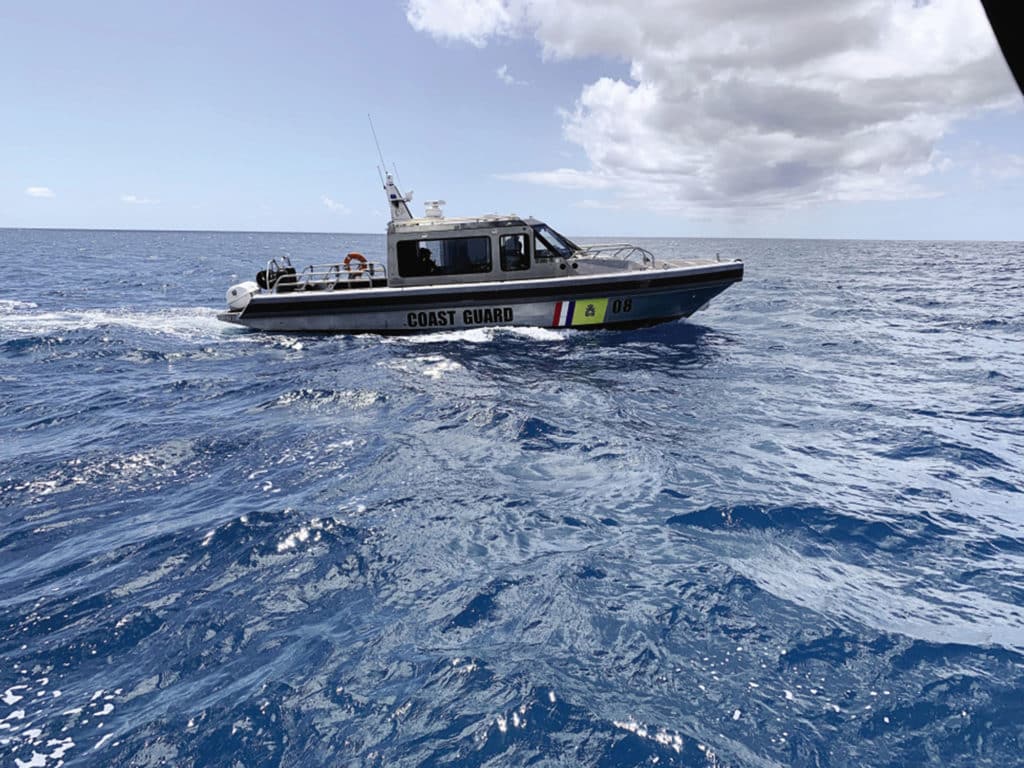
I have made the passage from the Caribbean to New England every year since 1999. Normally I sail with a full crew of paying charter guests, but this year I decided to return doublehanded. Most years, I stay east and sail almost due north on a beam reach to Bermuda on the first stretch before making the second, more-challenging leg from Bermuda across the Gulf Stream to Newport.
This year, with a departure from Red Hook—100 miles farther west from my usual departure point—we were lucky to not have to maintain easting to get to Bermuda (which was closed anyway) and were able to sail a relaxed broad reach. I seldom set a waypoint sailing offshore, but rather try to find a comfortable and quick sailing angle for the first half of a passage. If you are within 20 or even 30 degrees of your desired course, you are OK, as long as you have a good idea of the next wind shift. It gets even more important to follow a compass course to a waypoint the last couple of days.
By the time we hit the latitude of Bermuda, we were 160 nautical miles west of the island, and had shaved 100 miles off the traditional passage. After four days of trade-wind sailing, the breeze kicked up from the northeast above Bermuda, which allowed us to crack off and sail west on a broad reach to set up our Gulf Stream crossing. When the winds went southwest a day and a half later, we were able to tack over and sail north to cross the Gulf Stream with the winds and current running in roughly the same direction. Our course was north, but we were making northeast over the ground while in the Stream. We rounded Montauk, New York, some eight and a half days out and were docked before noon, just shy of a nine-day trip dock to dock.
Now that I am home, I look back on my shortened COVID-19 Caribbean season and am trying to predict what next season will look like. Will there be the same rallying cry to return next winter or will many cruisers feel required to stay close to home as a theoretical second wave reels up? Or will more sailors than ever choose to social distance by taking off on their boats looking for safer places to shelter until a vaccine signals the all-clear? At this moment, who knows?
Veteran voyager Hank Schmitt is the founder and proprietor of Offshore Sailing Opportunities, a networking service that links boat owners with prospective crews. For more, visit its website.
Marooned in the Maldives
by Judy Sundin
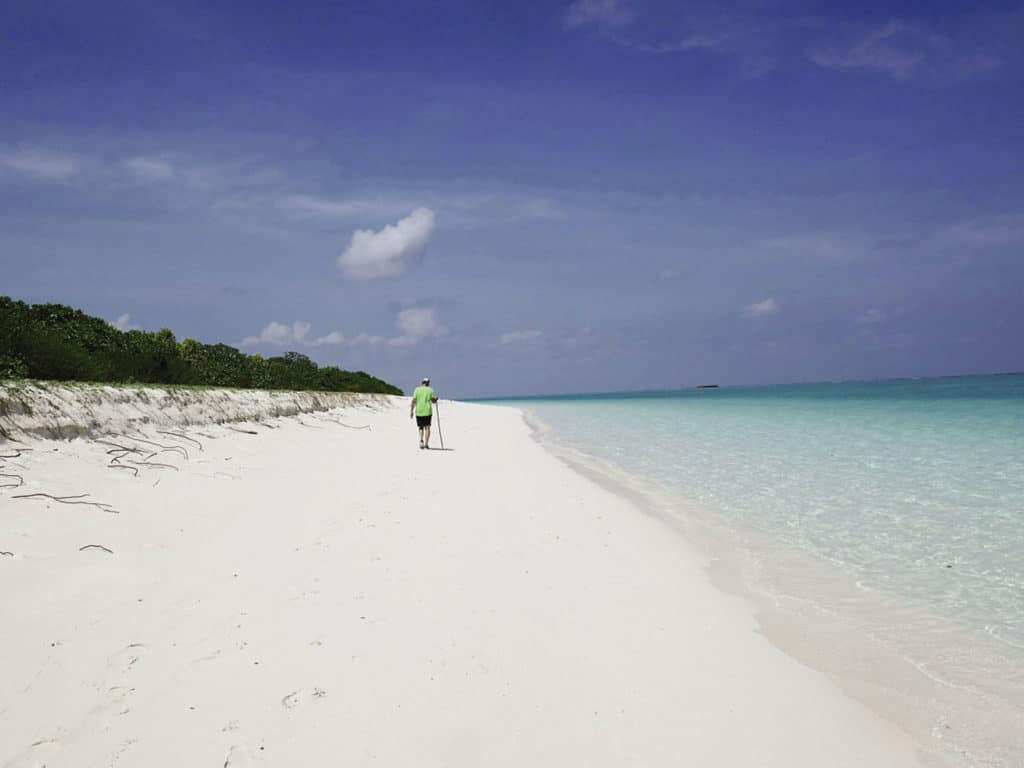
We are a couple, Sherman and Judy Sundin, sailing the world on our Bristol 41, Fairwinds 1. We arrived in Uligan in the northern Maldives on March 15, with plans to continue to transit the Indian Ocean and then sail back to the southern Caribbean, completing our circumnavigation. In the three days it took to sail from Sri Lanka, so much had changed. The check-in was unusual with our temperatures being taken, but the masked and gloved officials did not come aboard.
At midnight on March 20, the Maldives closed its borders. Several boats that arrived after the closure were provided with a brief time to rest and take on fuel, food and water, but were then asked to leave the Maldives. Borders were closing like falling dominoes, and we were grateful we could officially stay put. Access to shore was prohibited, but we could swim around our boats. SIM cards for cellphones and other supplies were provided. Then we waited. As the weeks passed, our small home became even smaller: 36 steps for a round-trip spin around the deck; seven and a half steps from bow to stern belowdecks; two paces across.
We looked at our options. Tanzania was the only country open, but with our own healthcare concerns, we couldn’t go to a country that had basically ignored the virus, other than suggesting that herbal tea and prayer were a cure. After 20 days, we were given permission to mingle with other cruisers in the anchorage but were not granted shore access. Just how serious was this situation? How long would it last? Had the world gone mad?
Lots of questions, no answers.
COVID-19 cases started to explode in the capital city of Malé. A city of approximately 220,000 people on an island measuring a little over 3 square miles, it is one of the most densely populated cities on Earth. In the meantime, behind the scenes, many of our fellow cruisers were toiling away tirelessly, organizing supply deliveries and searching for alternative anchorages that we might get permission to go to. With a strict no-movement order in place, the latter was not getting any traction.
We once again made contact with our respective embassies to see if they could seek permission for us to return to Malaysia. No luck. We had to stay put. Yet the southwest monsoon season was approaching. The weather was clearly turning and the wind shifting, so we moved across to the western side of the lagoon and found some protection behind the reef and the small island of Innafinolhu.
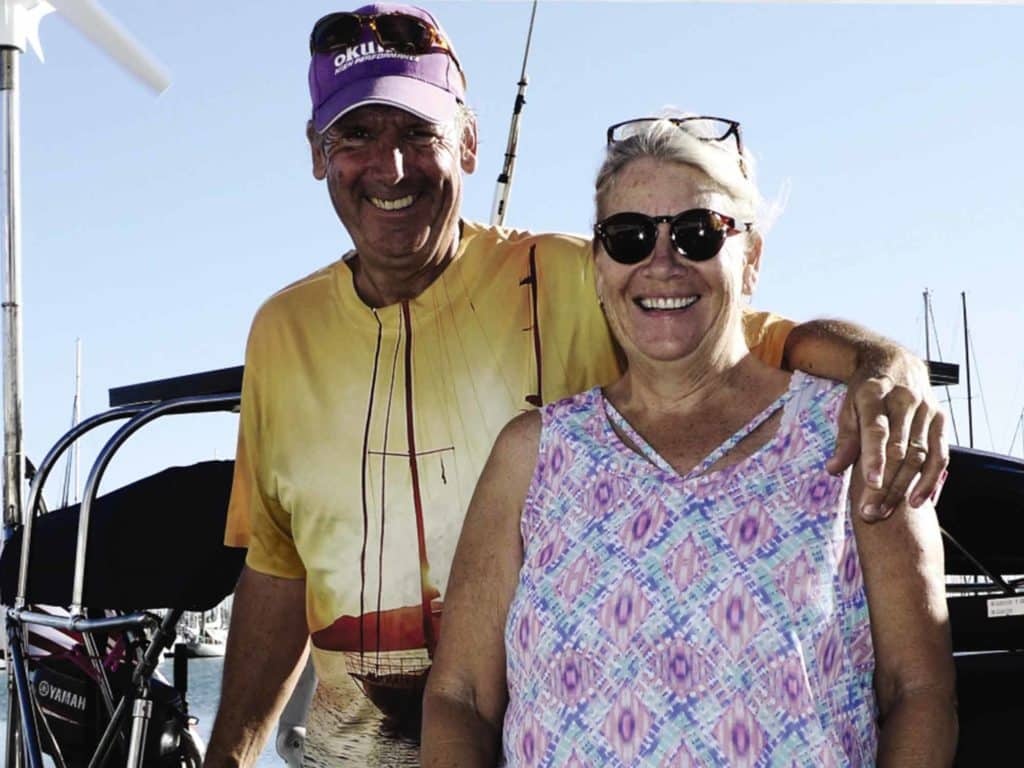
Several boats successfully sought and received permission to sail to Malé and prepared to continue on their journey. Some had permits to go to the British Indian Ocean Territory in the Chagos Archipelego, while other EU-registered vessels received permission to sail to Reunion Island. As US sailors, both of those places were still closed to us. The rumor was that the Seychelles would open up on June 1, but where to after that?
Our agent was able to secure us permission to go ashore on Innafinolhu. After six weeks of limited exercise, my first walk on the island was blissful. We had turned a corner somehow, and the fact that we could once again resume sundowners on a beach felt like life had taken a turn for the better. Our conversations could be about trivial things instead of our stagnant situation.
However, a cyclone was forming in the Bay of Bengal—not that far away, but heading north. Its tail was sucking all the energy out of this side of the Indian Ocean, and we were about to get hammered. Our agent, horrified at the videos sent to him showing our tenuous anchoring conditions, immediately called the embassies on our behalf to try to get them to put pressure on the government to give us permission to move to other anchorages for our safety. It wasn’t granted, turning it into a wild week of broken rode snubbers and open-sea-passage conditions in our anchorage.
With a combination of the restricted-movement order and bad weather, our supply boat had not made it up this far north. Our supplies were dwindling. We continued to wait for news of any path to open up. The confinement and constant weather worries had surely tested our patience and our mental health.
Finally, we were given permission to move south to Malé. This had become the epicenter of COVID-19 in the Maldives, so we sailed there with some trepidation. Still, it felt wonderful to be on the move and at sea. With the assistance of our agent, we were able to resupply, collect our parts and get our medications. There are four boats remaining here in Malé. After 90 days of being in lockdown, the restrictions were lifted. We will stay here for the time being while we seek permission to go to the Seychelles. From there, we will decide where to go next: South Africa if it opens, the Med via the Suez Canal, or back across the Indian Ocean to Asia. Our uncertain travels continue.
Judy and Sherman Sundin, an Aussie and American, respectively, met while working for American Express in Sydney. They purchased Fairwinds 1 in 2012, and set sail for the Caribbean. They’ve been living aboard and exploring the world ever since.
Isolated on the Intracoastal
By Tory Salvia
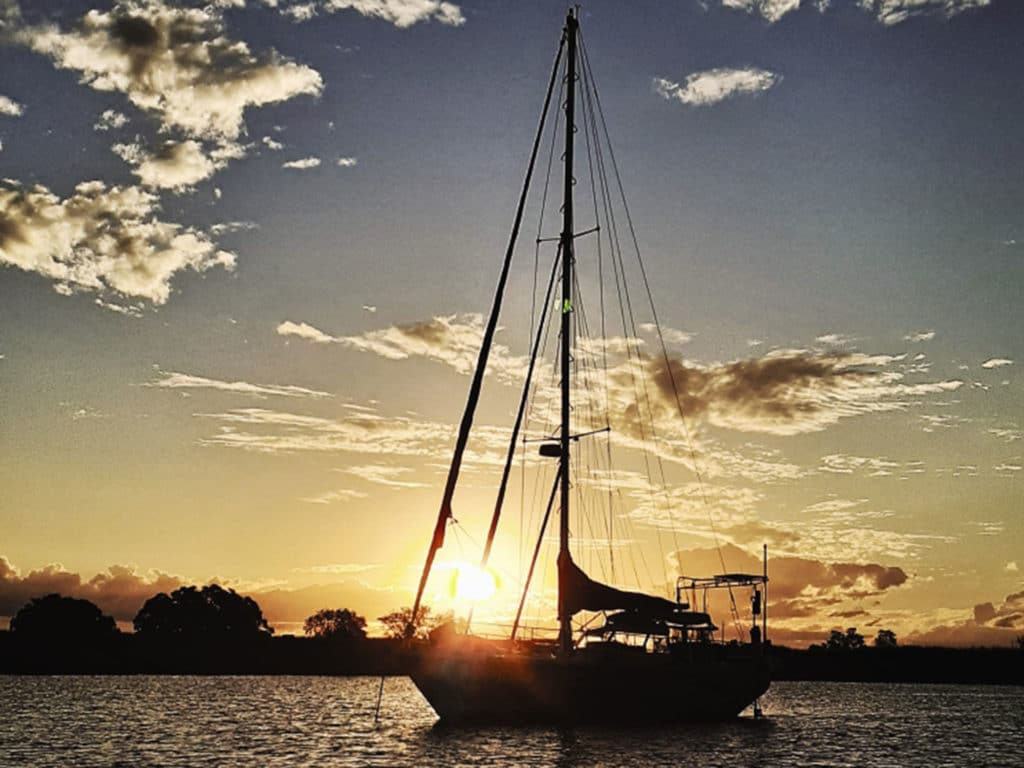
On December 6, 2019, I awoke aboard my Mariner 36 sloop, Sparkle Plenty, to sun streaming into the cabin, totally unaware of the crisis that would unfold in the months ahead. Outside, a chilly Chesapeake Bay wind blew out of the south. With two crew, we soon motored out the narrow creek on the West River, about 10 miles south of Annapolis, Maryland. I contemplated the voyage ahead to Georgetown, South Carolina. There I would spend the winter in relative warmth. My plan was to return in April and resume my life.
After a rough three-day trip to Hampton, Virginia, we carried on to the Elizabeth River and into “the Ditch.” On the FM radio I heard something about “China” and “virus” but paid no attention. My focus was on bridge openings and making our designated anchorages before the early winter sunset. Our trip south was relatively uneventful except for one grounding on a mud bank that required a tow, my first ever in nearly 45 years of sailing. Soon I would be aground again.
In Georgetown, South Carolina, on December 21, I docked at Harborwalk Marina, just 100 yards off Front Street, the town’s main drag. I flew home for Christmas and returned at the end of January. By then, Wuhan, China, was starting to appear in the news with reports of a new virus. “Just another flu,” I thought.
By the end of January, the Wuhan outbreak was starting to make international news. In the US, February was a lost month. Even though the number of countries reporting the virus had exploded, locally it was business as usual. Then in early March, the country seemed to wake up. Once the focus shifted to “community spread,” I suddenly realized the virus might be here. Perhaps aboard the next transient boat? My slip mate’s boat? My boat?
Until now, our small group of liveaboards had shared drinks and cooked dinners together. As COVID-19 became a local issue, we started looking at each other with apprehension. What effect would the virus have on our plans? What about Intracoastal Waterway bridges? Would the Corps of Engineers close the Ditch? What about the hundreds of boats about to head north? Should we sail or remain in port? As public health officials called for people to stay home, I decided to remain in Georgetown through April, for my own safety and the general good. Soon marinas started closing along the ICW, local businesses shut down, and social distancing became the new mantra. Few transients passed through. Cruisers went into hunker-down survival mode.
With cases spiking in Maryland, I extended my stay in South Carolina through May. Each morning, I awoke early with plans to accomplish several tasks, but my energy quickly dissipated. I experienced what many have described as “COVID-19 malaise.” In the evenings, I walked the historic district. The streets were deserted. I had a cab deliver provisions purchased online. I did laundry at midnight. I avoided my slip mates. I wore a mask and gloves whenever I left the boat.
Once Maryland allowed recreational boating to resume in late May, it was time to return home. But my June voyage was not what I had envisioned. I had wanted a leisurely passage, visiting towns and isolated anchorages along the ICW, followed by a week or so of cruising the lower Chesapeake. But that was the pre-COVID-19 world. Now, a fast passage was in order, with limited to no external contacts. Then, suddenly, my local crewmember became unavailable. I immediately put out a crew call on my social media and crew finder sites.
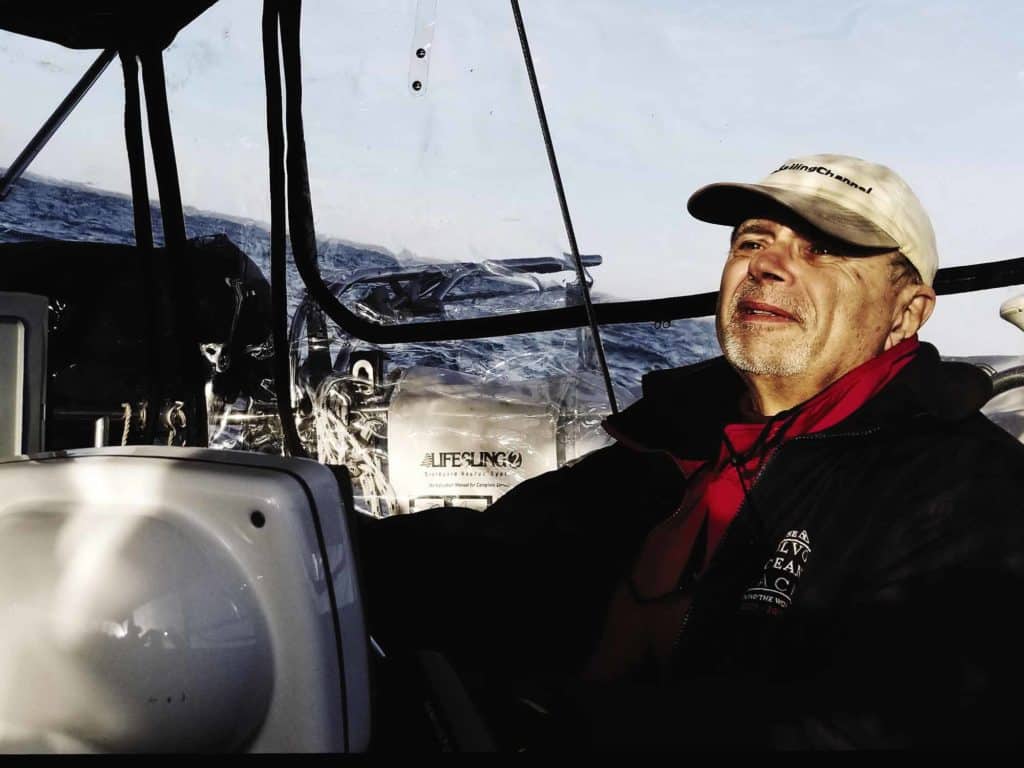
The first reply was from Bill Cullen, an extremely experienced sailor known for his gear talks at boat-show seminars. Our passage would be a delivery with as few outside interactions as possible; we would sail as many miles as possible during the long summer days before dropping the hook. During the entire passage, we stayed at only one marina, in Myrtle Beach. From our departure, we raised sail whenever possible. Contrary to some “experts,” you can sail or at least motorsail much of the ICW when the wind is off your stern quarter.
With two weeks of provisions stowed aboard plus extra diesel and water, we made 12-hour runs and 70-plus-mile days; consistent southerlies allowed us to keep sail up along much of the Ditch. We free-sailed the wider rivers, sounds and the Chesapeake. Sailing added 1 to 2 knots to our motoring speed and more to our morale.
It was a fast but eventful trip, so quick that my relief crew was unable to join me, but Bill carried on. Ten days out of Georgetown, we pulled into my slip in the small village of Galesville.
As I write this, I am nearing the end of my self-imposed 14-day quarantine aboard. I made this decision long ago to protect my family and friends once I returned. Outside the marina bubble in the village, most people are not wearing masks. What are they thinking? In rough weather, sailors wear PFDs to protect themselves and their crewmates. If you go overboard without a PFD, you make a rescue much more difficult, putting yourself and other crew at greater risk. Right now, because of COVID-19, we are all experiencing some very rough weather. Like PFDs, we need to wear masks to protect each other.
Once my quarantine ends, I am apprehensive about leaving the boat. I feel like a singlehander returning from a long voyage at sea, unsure of my land legs. I am already weary of constantly being on guard. I am unsure about my future. Will I remain here, or will I sail south again? The only certainty I have is that Sparkle Plenty still pulls at her dock lines.
Filmmaker Tory Salvia specializes in nautical productions and is the president of the Sailing Channel LLC.
Quiet and Connection Down Under
By Lin Pardey
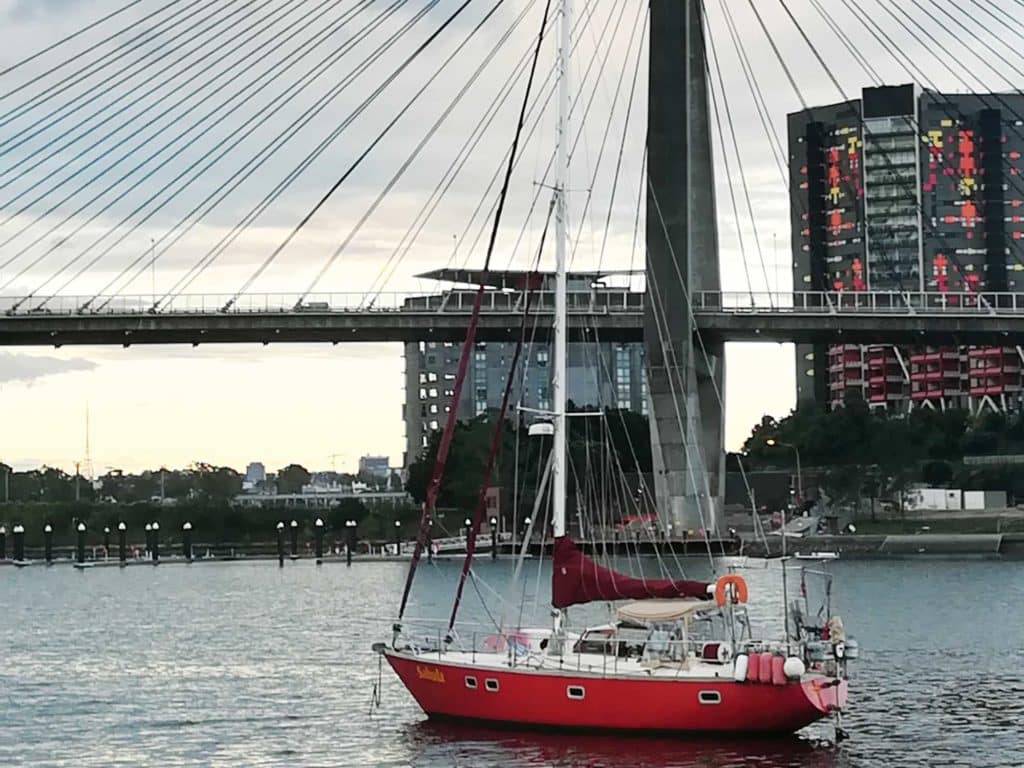
Cruising on,” I wrote to my family in the early days of the pandemic. “Not much has changed.” And in most ways, despite the COVID-19 restrictions here in Australia, that was true.
In mid-March, after a two-and-a-half-month layover near Melbourne to spend time with David’s first granddaughter and to welcome his first grandson, we set sail east and then north aboard his 40-foot cutter, Sahula, slowly meandering toward Queensland’s Great Barrier Reef. “Slowly” is the operative word. We didn’t want to get into the tropics before the end of the cyclone season. We enjoyed beautiful, isolated anchorages near Wilsons Promontory National Park and the excitement of crossing the shallow river bar at the coastal village of Lakes Entrance. Because we had little internet access, we enjoyed days of solitude, reading, catching up with onboard projects, and walks on shore.
Only when we ran low on provisions and headed into the town of Eden two weeks later did we learn the government was clamping things down to contain the virus. Self-isolation was to start the very next day. The last nonessential shops were being closed indefinitely as we walked through this normally vibrant little town. The market shelves had dozens of bare spots as I topped up our supply of fresh food. I was thankful I had previously done a large reprovisioning, so didn’t need toilet paper or paper towels.
We carefully read the new regulations and found no direct reference to people living on yachts, other than to self-isolate and go out only to exercise or buy food. As we journeyed northward, we tried to avoid shopping for groceries more than necessary and took the recommended precautions when we did. The only other times we were within 100 meters of another person was when we topped up on water and fuel.
It was three weeks after the self-isolation orders had gone into effect that we reached Sydney Harbor. And there I had a small taste of how difficult the COVID-19 restrictions were for most other people. Since it was legal to take walks ashore together for exercise purposes, we called David’s daughter, who lives in an a very small terrace house only a few miles from where we anchored. “Come on down to the park here at Blackwattle Bay. Bring Peaches (the dog) for her walk. We can stroll and talk as long as we stay 2 meters apart.” My arms actually ached from wanting to give her kids, Emily and Lachlan, hugs when we met.
Fortunately for us, Sydney Sails was considered an essential business because the crew there makes safety gear bags for the ferry fleet. Thus we were able have the boat measured and a sail fitted, then test the new nylon drifter Sahula needed. Kale, a fine marine electrician, was another whose occupation was declared essential. He did yeoman duty when we accidentally roasted our house batteries. The comings and goings of these tradesmen helped us feel little had changed as we had contact with other people.
It did feel spookily quiet on Sydney Harbor: almost no city sounds, only the occasional rumble of a truck across the normally traffic-laden bridge only a few hundred meters away from our anchorage. And almost no wakes to rock the boat as local yachts stayed tied up, and only a fifth the usual number of ferries crisscrossed the harbor.
When we went ashore for a walk, we did chat casually to half a dozen local liveaboards we passed. “As long as we spend most of our time on board, the local authorities don’t care if we move from anchorage to anchorage,” one told us as we lingered alongside in our dinghy.
The marine police in some of the ports to the north of Sydney had different interpretations of the regulations. On April 28, six weeks after the self-isolation period began, we left Sydney to continue northward. At a small market in the Pittwater region on Broken Bay (about 20 miles north of Sydney Harbor), we chatted with an American sailor who had been told he must find a mooring and not move from there until the lockdown was over. But no one approached us during the two weeks we spent in the isolated-feeling rivers and creeks of Broken Bay.
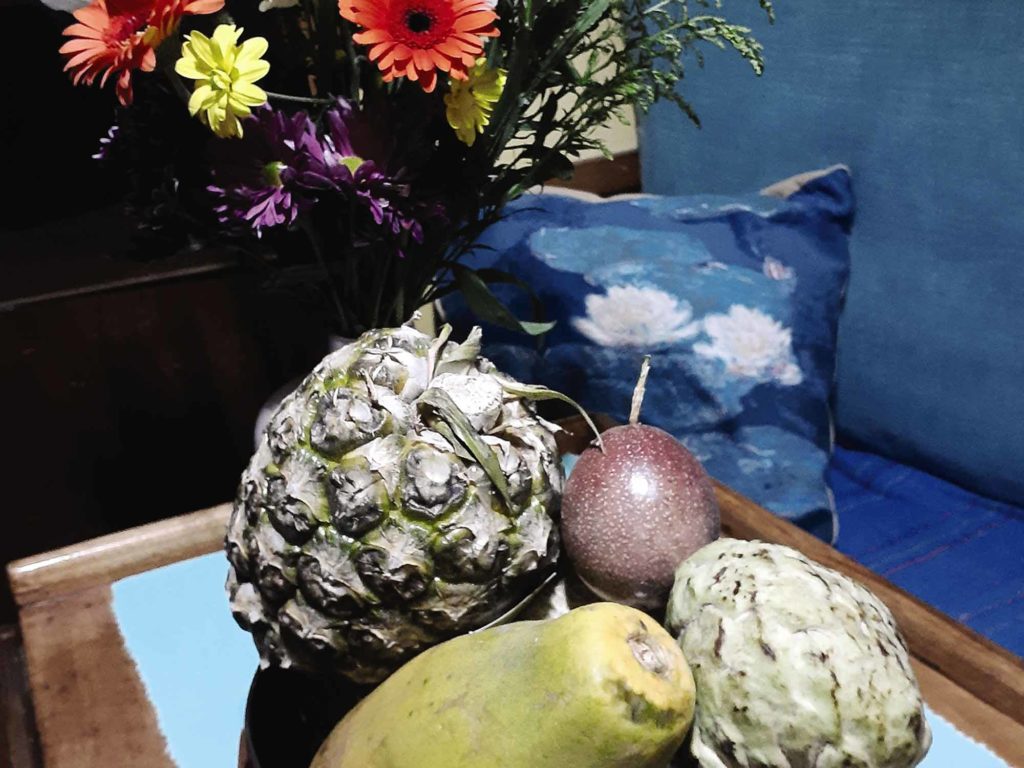
The American sailor was the first of almost two dozen overseas cruisers we met who were questioning their next moves. They were all stuck meandering the coast of New South Wales as Queensland closed its border to everyone other than residents. Many of these cruisers are having to fight for visa extensions to keep their stays legal. Because I hold both an American and New Zealand passport, David is a returning Queenslander, and Sahula’s hailing port is Townsville, the two of us can sail on to the Barrier Reef, then back to New Zealand.
It was also in Broken Bay that we heard what to me felt like exciting news. As of the next day, anyone in New South Wales could safely and legally have two other adults over for a visit. I immediately invited two Sydney friends to join us on board. Suddenly I realized just how much I missed entertaining, having an excuse to dream up special treats, give the boat an extra bit of sprucing up. When Ben and Di climbed on board, and Di reached out with her elbow, I began to do the same.
“No, that doesn’t feel right tonight,” Di said. Then we both shook our heads and eagerly grabbed each other in a hug. Now I knew what I had craved most of all in these strange COVID-19 days: the warmth that comes from true human contact.
Two-time circumnavigator and prolific sailing writer Lin Pardey is a longtime, cherished and regular contributor to Cruising World.








